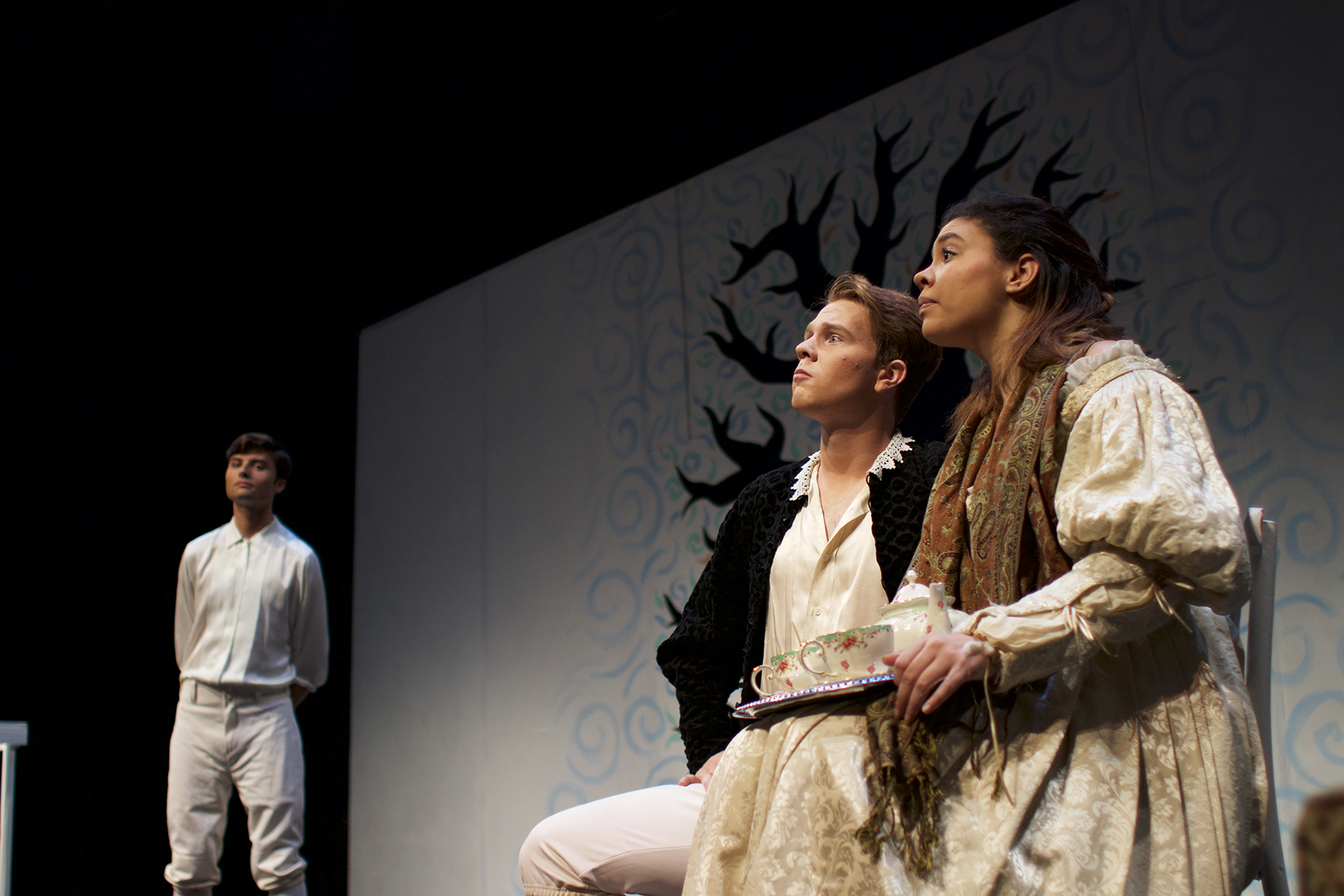
Rebecca Shoptaw
Sometimes after a very late night we might sleep until 1 p.m. and wake up in a foggy confusion. Other times we might sleep until a week later and wake up with a gender other than the one we’ve known for the past 30 years; or at least that’s what happens to Orlando, the title character of Sarah Ruhl’s play adapted from the Virginia Woolf novel. This year’s Freshman Show, directed by Aparna Nair-Kanneganti ’20 and produced by Liana Van Nostrand ’20, also a staff reporter for the News, follows the story of a time-evading, gender-fluid young person named Orlando, performed by Madi Cupp-Enyard ’20.
The play is a sort of bildungsroman as Orlando crosses centuries and genders to understand their “self” and the nature of existence.
The first act takes place largely in 17th- and 18th-century England where Orlando, as an adventurous young man, experiences the favor of Queen Elizabeth I, (Nurit Chinn ’20) love and heartbreak with a Russian princess (Jacqueline Blaska ’20), and a voyage to Constantinople, all the while being haunted by his inevitable mortality and inability to write a good poem about an oak tree.
For a first-time viewer, the combination of nontraditional dialogue and casting is, at first, disorienting. The play is largely written in the third person, borrowed from the narration of Woolf’s novel. Orlando and the rest of the cast dictate their actions as they occur, as if they are looking in on their own lives. This self-narration distances characters from the actions that they undergo. Mirroring Orlando’s own gender fluidity, the rest of the cast plays multiple parts, both male and female. Throughout the play, the cast members slip in and out of their disparate characters with ease, seemingly to remark on the mutability of identity. They make us forget that the actor who is now the housemaid was once a jilted lover, or maybe it doesn’t matter if we remember and if she is both at once.
By the end of act one, Orlando has inexplicably become a woman after a weeklong sleep. She is forced, for the first time, to acknowledge her gender, as she feels the limitations of Victorian England restraining her. She wonders whether she would be able to swim with all her petticoats if she were to jump into the water, and all our feminist hearts break a little for her. The sudden change in pronouns is surprising. However, as we now hear Orlando continuously refer to herself as “she” while speaking in the third person, we notice a continuity of character. Orlando is essentially the same person, introspective and bold, despite a superficial change.
The play comes to a resolution with Orlando’s understanding of her identity. Figures from her past, Queen Elizabeth and Princess Sasha, help her collectively view all of her past selves. Orlando understands herself as the collection of her experiences unbound from time or categorization. Having found her voice, Orlando is finally able to finish the poem about the oak tree.
Spanning 500 years and several geographic shifts, Orlando’s setting is complex, but is accomplished through a stage and cast treated like canvases. The stage setting is sparse and adaptable n with a few key objects symbolizing massive changes. The cast, beside Orlando, dress all in white like chameleons morphing with the needs of the scene. Upon the minimalism the play can impose the impression of any location and it at once feels ever changing and yet always the same.
With its complex meditations on gender, identity, time and death, Orlando imparts onto the viewer its aura of self-reflection and questioning. We leave wondering: Are we aware of the implications of our chosen or assumed genders? Do we know ourselves? And if we don’t have 500 years, will we figure it out before our mortality catches up with us?
Contact Savannah DiGiovanni at savannah.digiovanni@yale.edu .
Correction, April 7: The previous version of this article misspelled actor Madi Cupp-Enyard’s ’20 name and did not mention that producer Liana Van Nostrand is a staff reporter for the News.







